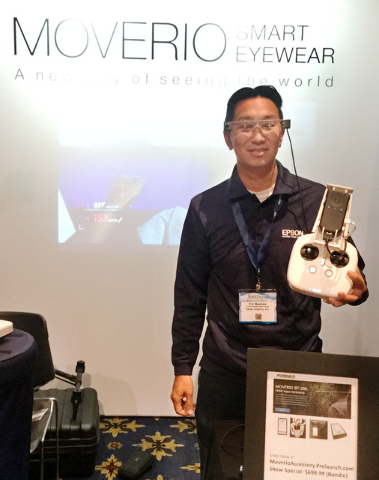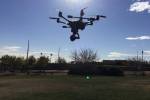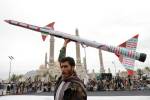At Las Vegas conference, drone operators envision next step — VIDEO
Commercial-drone operators have received the green light to make money using drones and to fly in specific areas — now they are hungry for more.
The question of what’s next for commercial drone operators was one of many discussed Thursday at InterDrone, a three-day conference at Paris Las Vegas dedicated to commercial drones.
“The professionalization of UAS (unnamed aerial system) is what’s going to allow us to take the next step in beyond visual of line of sight (also knows as BVLOS),” Dallas Brooks told a crowd of about 90 Thursday during a session about regulatory hurdles to BVLOS at InterDrone.
The application of commercial drones has the ability to assist in numerous industries ranging from search and rescue to product delivery. In order for that to be possible on a large scale, though, commercial drone operators need regulations allowing them to fly their drones beyond their line of sight.
The Federal Aviation Administration is working with partners, including Nevada and the other five FAA-designated UAS test sites to develop an unmanned traffic management system, to make BVLOS possible on a large scale.
“When you think about Beyond Visual Line of Sight, and for us to connect point A to point B, it sounds really easy when we’re sitting here talking about it, but in reality it’s very complex to not only put the plan together, but to get the FAA to sign off,” said Chris Walach, director of the FAA-designated Nevada Unmanned Aviation Test Site and the director of technical operations for the Nevada Institute of Autonomous Systems.
Brooks said, “The FAA is walking a fine line because they want to enable UAS operations as quickly as possible, but they’re also responsible for not just the UAS folks, they’re responsible for everyone, and that includes you and I when we’re flying on a commercial airliner.”
The BVLOS proposal by the FAA needs to include certification standards to ensure that a commercial drone is actually doing its intended operation, as well as include some type of detect-and-avoid technology, Brooks said.
Richard Jost, director of Las Vegas law firm Fennemore Craig and also general counsel for NIAS, said, “I think we’ll have to see that technology very soon. Otherwise no matter how hard everybody works at keeping the airspace safe, that’s going to be the challenge.”
Such technology is already emerging.
California-based Epson America Inc. exhibited Moverio augmented reality glasses during InterDrone, allowing for drone operators to see what is around their drone as well as what their drone is seeing when the drone is, in some cases, up to three miles away from the drone operator.
“We can render 3-D, 360 degree digital data into the pilot’s field of view,” said Eric Mizufuka, Epson’s product manager of the glasses. “What that means is that you can keep visual line of sight with your aircraft. At the same time, you can see all of your telemetry data as well as see what the aircraft sees.”
Augmented reality and FPV technology are just a few tools in the toolbox, Brooks said. Multi-sensor detection is also being developed to mitigate the risks of integrating unmanned aircraft with manned aircraft.
“In a few years from now, we will see amazing technology that was once just a figment of our imagination,” he said.
Contact Nicole Raz at nraz@reviewjournal.com or 702-380-4512. Follow @JournalistNikki on Twitter.





























